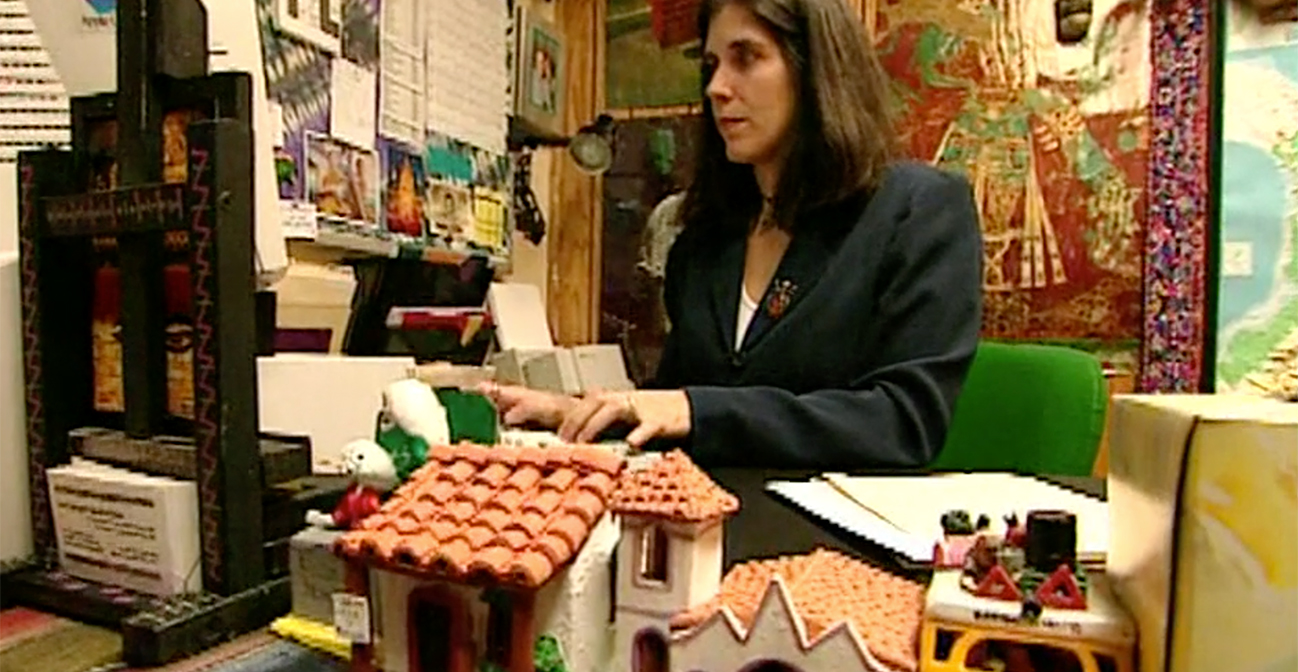Join us for conversations that inspire, recognize, and encourage innovation and best practices in the education profession.
Available on Apple Podcasts, Spotify, Google Podcasts, and more.

CLASSROOM AT A GLANCE
Teacher
Lori Langer de Ramirez
Language
Spanish V
Grades
12
School
Herricks High School, New Hyde Park, New York
Lesson Date
February 26
Class Size
22
Schedule
43 minutes daily
In this lesson, students read a letter written by prominent Colombian artists and intellectuals to Spain’s prime minister. The letter is in protest of a new Spanish policy requiring Colombians to obtain a visa in order to enter Spain. Role-playing Latin American artists, students formally debate the pros and cons of accepting an invitation to exhibit their work in Spain. After a vote, they prepare to write a letter in response based on majority opinion.
Communication: Interpersonal, Interpretive, Presentational
Cultures: Practices, Products
Connections: Making Connections, Acquiring Information
authentic materials
Authentic materials are resources that have been developed specifically for native speakers. These include print, audio, and visual materials.
fossilization
Fossilization refers to the linguistic phenomenon in which students internalize “incorrect” or “non-standard” forms of the language to the degree that they become habits of speech not easily corrected.
native speaker
A native speaker considers the target language to be his or her first language. Teachers seek opportunities for students to communicate in person or through technology with native speakers. Students in foreign language classes who are first- or second-generation immigrants and who use the language extensively outside the classroom are also considered native speakers. These students typically maintain the cultural norms of their heritage in certain situations. See also heritage speaker.
role-playing
Role-playing is an activity in which students dramatize characters or pretend that they are in new locations or situations. This activity challenges students by having them use language in new contexts.
thematic units
Thematic units are designed using content as the organizing principle. Vocabulary, structures, and cultural information are included as they relate to the themes in each unit. For an excellent example of theme-based units, see the Nebraska Foreign Language Education Web site in General Resources.
Reflect on Your Practice
As you reflect on these questions, write down your responses or discuss them as a group.
Watch Other Videos
Watch other videos in the Teaching Foreign Languages K-12 library for more examples of teaching methodologies like those you’ve just seen. Note: All videos in this series are subtitled in English.
Performing With Confidence (French) explores student presentations based on research of political topics, and Exploring New Directions (Chinese) illustrates student interpretation and presentation of dissident poetry.
Put It Into Practice
Try these ideas in your classroom. Where it’s not already evident, reflect on how to adapt an idea that targets one performance range for application to other performance ranges.
World-Readiness Standards for Learning Languages
The World-Readiness Standards for Learning Languages create a roadmap to guide learners to develop competence to communicate effectively and interact with cultural understanding. This lesson correlates to the following Standards:
Interpersonal Communication
Interpretive Communication
Presentational Communication
Cultures
Interact with cultural competence and understanding
Relating Cultural Practices to Perspectives
Relating Cultural Products to Perspectives
Connections
Connect with other disciplines and acquire information and diverse perspectives in order to use the language to function in academic and career-related situations
Making Connections
Acquiring Information and Diverse Perspectives
Lesson Materials
Rules for Debate (PDF, 15 K)
Debate procedure followed by students (Includes English translation)
Debate Worksheet: Student Work (PDF, 104 K)
Worksheet completed by a student, which lists classmates’ arguments and counterarguments during the debate
Curriculum References
New York State Education Department: Standards and Information About Learning Languages Other Than English
Lori Langer de Ramirez’s Additional Resources
Print Resources:
Krashen, Stephen D., and Tracy D. Terrell. The Natural Approach: Language Acquisition in the Classroom. Hayward, CA: Alemany Press, 1983.
Omaggio, Alice C. Language Teaching in Context. 2d ed. Boston: Heinle & Heinle Publishers, 1993.